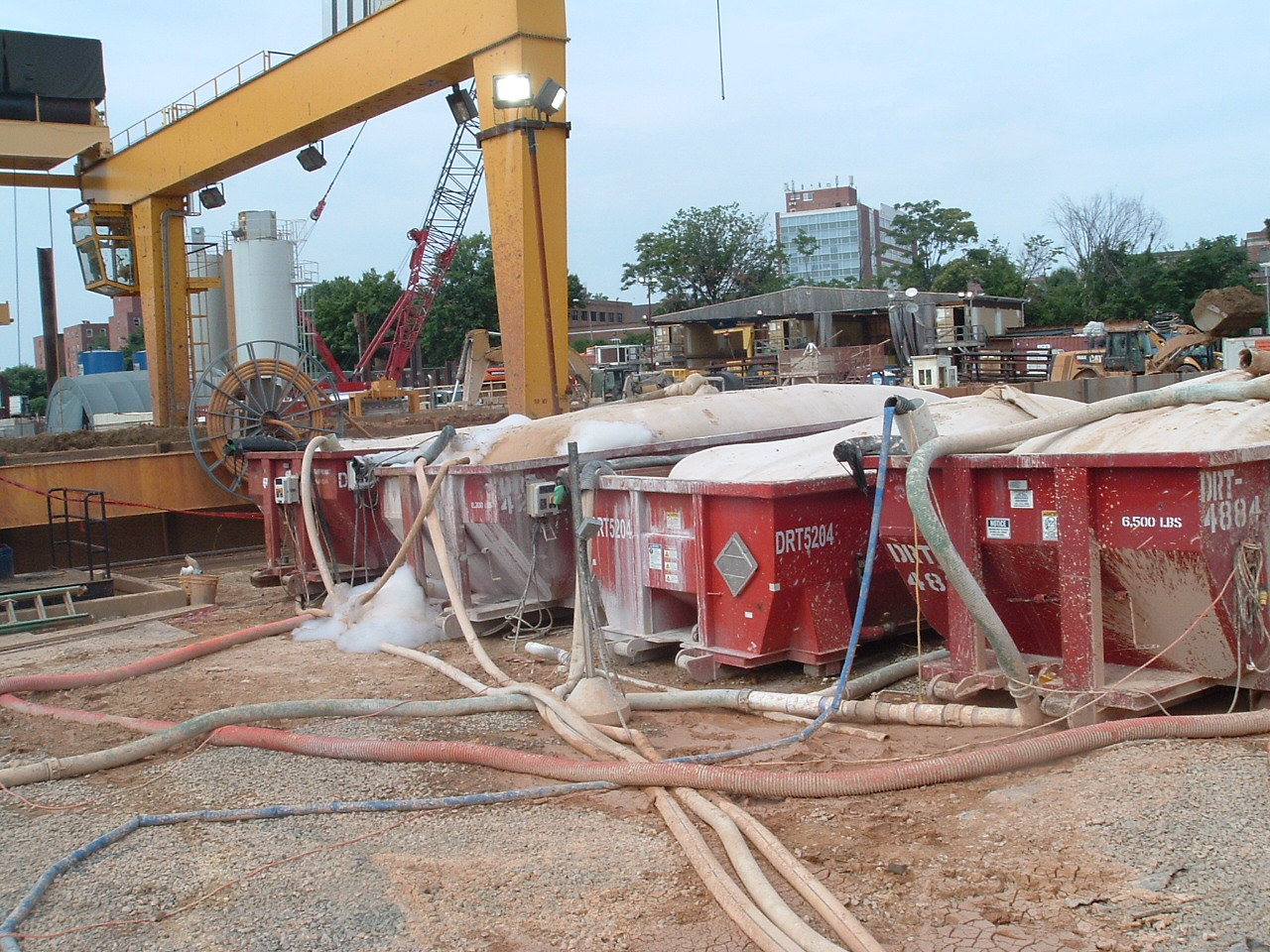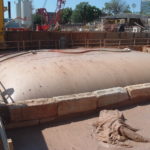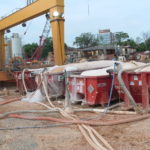Company:
Flint Industries Inc. Metter, GA
Project Details
Fabric 1
Flintex™ OS425 Hi-Flo
Producer:
Flint Industries
Engineer Company 1
Impregilo-Healy-Parsons Joint Venture
Fabrication Company
Flint Industries
Project Manager Name
Frank Flannelly
Project Manager Company
Impregilo-Healy-Parsons Joint Venture
Installation Name
Lowell Sieck
Installation Company
CSI Environmental
Please describe the project specifications
In 2013, the Impregilo-Healy-Parsons joint venture was awarded a $254 million to design and build the second portion of a large tunnel system in Washington D.C., USA. The purpose of the tunneling project was to direct wastewater and storm water separately to relieve the Anacostia River from combined sewer overflows. This 12,300 linear foot (3.8km) of 23 foot (7m) diameter tunnel construction approximately 100 feet (30m) underground also entailed the construction of 6 water intake shafts from the surface to the tunnel. It was part of the $2.6 billion Clean Rivers Project to reduce combined-sewer runoff to the Anacostia and Potomac rivers and Rock Creek by 96%. This Clean Rivers Project is the largest project undertaken in Washington, D. C. since the construction of the city’s metropolitan transportation system. By working north to south, the tunnel finished by connecting to the Blue Plains Tunnel. This DC Water job used a 1,248 US ton (1,132 metric ton) tunnel boring machine nicknamed “Nannie” which began her work in 2015.
What was the purpose of this project? What did the client request?
The drilling and mortaring operation generated slurry which was a combination of groundwater and residual mortar water. The solids percentage of this mixture varied widely from 1% - 8%. The drilling operation typically ran 24 hours a day, 7 days per week with very few shut downs. They pumped intermittently with two shifts per day and it is estimated that they averaged 10 to 12 hours of actual pumping time per day. During active pumping, the flow generally ranged from 100 to 200 gallons per minute (378 to 757 liters per minute).
The contractor had experienced many failed attempts to process these drilling fluids from the tunnel. A settling pit could not handle the flow. Because the abrasive solids were damaging to the belts on the belt filter press causing excessive downtime, there was not sufficient space to run the number of presses needed to reliably process the flow. Conventional geotextile tubes, with an industry standard dewatering rate, using wastewater treatment polymer was also tried but the dewatering rate was too low to accommodate the tunnel discharge. They had reached an impasse, having experienced environmentally induced shutdowns and fines.
What is unique or complex about the project?
The variability in pumping times often created challenges, sometimes creeping up at all hours of the night. Slurry treatment was complicated mostly by the very high pH, usually 12 or greater, which required neutralization by addition of acid prior to polymerization and often following polymerization. This was necessary to produce effluent acceptable for discharge to the Blue Plains Wastewater Treatment Facility.
Additionally, there was variation in the material being drilled, such that for part of the project they encountered unexpected old mercury contamination. Specialized chemical treatment was needed to remove the mercury and make the water safe for discharge to the wastewater treatment facility.
What were the results of the project?
In the summer of 2016, the successful drilling fluid treatment process was presented to the contractor by the installer who demonstrated treating the slurry with his custom blended high molecular weight anionic emulsion wastewater treatment polymer followed by dewatering the treated wastewater through TITANTube® Hi-Flo geotextile tubes inside roll-off containers. He demonstrated that this method could treat the full flow from the tunneling operation in the space allotted. The contractor was able to recognize the significantly higher dewatering rate in that he needed a larger pump to move the effluent. The installer used from 6 to 12 high flow roll-off geotextile tubes on-line at any given time, and during the last few months of the project used 45 foot circumference x 50 foot (13.7m circumference x 15m long) TITANTube® Hi-Flo geotextile tubes to accommodate increased flow rates and longer daily pumping periods. The inorganic solids contained a high concentration of calcium which dewatered rapidly reaching 50% to 60% solids in the high flow tubes within 2 to 4 days.
This project was completed ahead of schedule in March, 2017 and there were no further environmental concerns or shutdowns as they were able to process the tunnel discharges at a rate commensurate with their construction schedule. With its unique three dimensional weave, the innovative high flow geotextile tubes were the solution for dewatering treated drilling fluids on this project. This technology also represented a significant cost savings over other dewatering processes. No other method (conventional geotextile tubes, mechanical dewatering, or settling basin) was found to be successful at accomplishing this treatment with the capacity needed.
Content is submitted by the participant. IFAI is not responsible for the content descriptions of the IAA award winners.


 TEXTILES.ORG
TEXTILES.ORG




